13 Sounds Dogs Hate
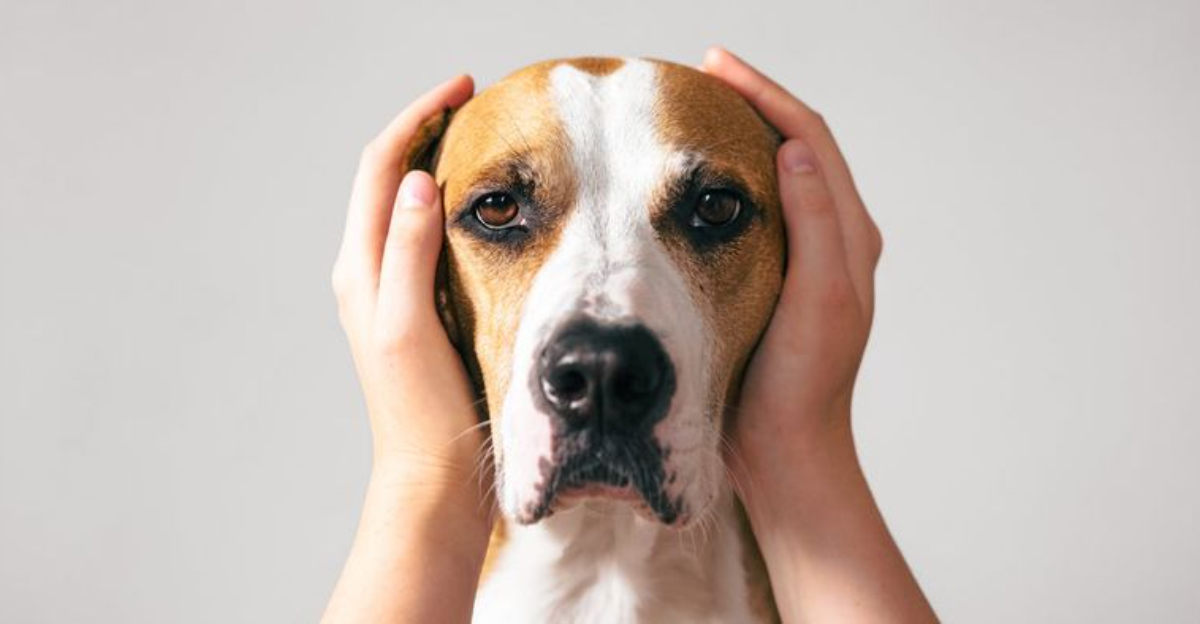
Dogs are known for their acute sense of hearing, and while they might appreciate a good squeaky toy or relax to some soft music, there are certain sounds that send them running for cover.
Whether it’s the sudden blast of a hairdryer or the high-pitched whine of a mosquito, these noises can be quite distressing for our canine companions. Let’s explore some of these sounds that dogs would rather avoid.
1. Thunderstorms

Thunderstorms can be terrifying for dogs, with their booming thunderclaps and sudden flashes of lightning. The unpredictability of these natural phenomena can make even the bravest of dogs cower in fear.
Many dogs seek shelter under beds or in closets to escape the noise. It’s a noise that not only rattles windows but also rattles their nerves. The sound of thunder can trigger anxiety, causing dogs to pace, whine, or exhibit destructive behavior.
Some pet owners have found success in calming their dogs with specially designed anxiety wraps or creating a safe, quiet space. The key is to provide comfort and reassurance, making your pet feel secure amidst the storm’s chaos.
Remember, dogs have sensitive ears. What might sound like a distant rumble to us is a roaring disruption to them. Consider playing calming music or using noise-canceling devices to help ease their storm-induced stress.
2. Fireworks

Fireworks might be a spectacle for humans, but for dogs, they’re a cacophony of loud and sudden bangs that can be deeply unsettling. The explosive sounds, combined with bright lights, can send even the most laid-back pooch into a panic mode.
Dogs often respond to these unexpected noises by trembling, hiding, or trying to escape. The unpredictability of fireworks makes them particularly distressing for dogs. While humans might anticipate the next bang, our canine friends are caught off guard.
This lack of predictability can heighten their anxiety, making a festive occasion seem like a nightmare. Many dog owners have found that providing a cozy and secure environment can help during fireworks displays. Closing windows, drawing curtains, and playing soft music can create a buffer against the outside noise. It’s all about creating a safe haven where your dog can feel protected and calm.
3. Vacuum Cleaners
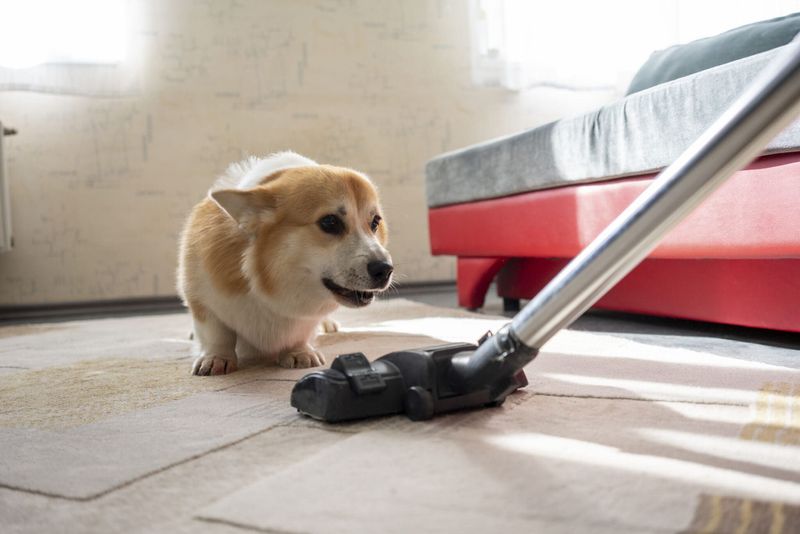
The humble vacuum cleaner might be a household necessity, but for dogs, it’s often seen as a noisy, unpredictable beast. The sound of a vacuum cleaner can send some dogs into a frenzy, barking and darting around the room in an attempt to challenge this loud intruder.
Dogs might perceive the vacuum as a threat, given its roaring sound and movement across the floor. This combination can trigger a fight or flight response in our furry friends. To them, the vacuum cleaner is a perplexing phenomenon that they can’t quite figure out.
To help your dog cope, try gradual exposure to the vacuum’s noise. Start by letting them investigate the machine while it’s turned off.
Over time, with patience and positive reinforcement, your dog might become more tolerant of this noisy household chore. A little understanding can go a long way in easing their vacuum-related fears.
4. Sirens

Sirens, with their piercing wails and varying pitches, can be particularly distressing for dogs. The abrupt nature of sirens, whether from ambulances, fire trucks, or police cars, can catch a dog’s attention—and not in a good way.
These sounds can cause dogs to bark, howl, or exhibit signs of stress. Dogs might interpret sirens as a call to action or a warning of impending danger. Their sensitive hearing makes these high-pitched noises even more intense, magnifying their anxiety.
It’s a sound that’s hard to ignore, whether you’re a human or a canine. To help soothe your dog during these moments, try talking to them in a calm and reassuring manner. Offer treats or engage them in a favorite activity to distract from the noise. Remember, understanding their perspective can help in reducing the stress caused by these alarming sounds.
5. Alarms

Alarms are designed to be attention-grabbing, but for dogs, they can be overwhelming and downright frightening. Whether it’s a smoke alarm, car alarm, or security system, the shrill sound can trigger a strong reaction in dogs.
These noises are often sudden and loud, catching dogs by surprise and causing them to become anxious or agitated. It’s important to understand that dogs hear at a higher frequency and volume than humans, making alarms particularly harsh on their sensitive ears.
To manage your dog’s reaction, ensure they have a safe and quiet place to retreat to when alarms go off. Try to desensitize them to these sounds gradually, rewarding calm behavior with treats or affection. Your understanding and patience can make a big difference in helping your dog cope with these alarming noises.
6. Loud Music
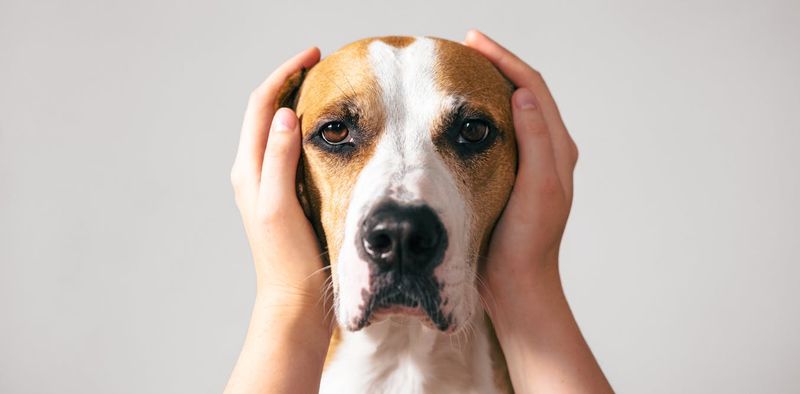
Loud music might be a source of joy for many people, but for dogs, it can be an unwelcome intrusion into their peaceful world. The booming bass and sharp treble can overwhelm their acute sense of hearing, leading to unease and discomfort.
Unlike humans, dogs can’t simply turn the volume down or walk away from the noise. It surrounds them, often causing stress, anxiety, or even physical discomfort. Their ears are simply not designed to handle such high decibel levels comfortably.
To ensure your pet’s comfort, keep the volume at a moderate level when your dog is around. If you’re hosting a party or event with loud music, consider setting up a quiet space for your dog to retreat to. A little consideration can go a long way in keeping your furry friend happy and stress-free.
7. Construction Noise
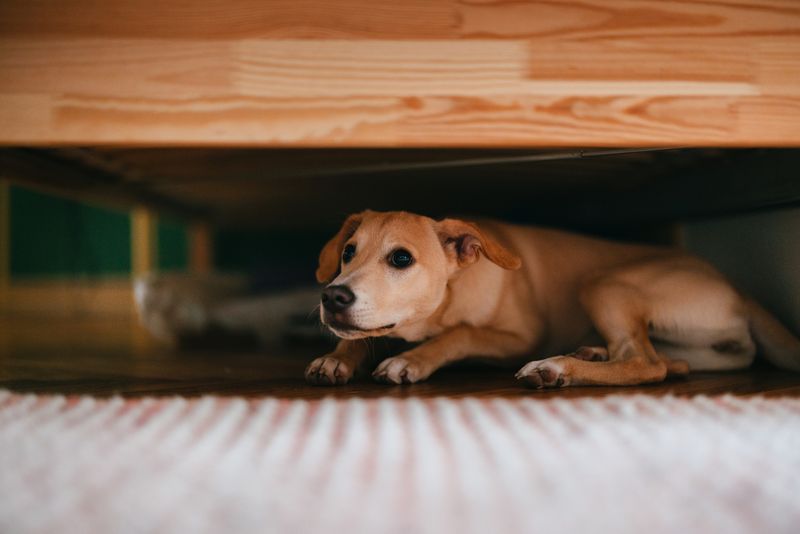
Construction noise, with its incessant drilling, hammering, and machinery sounds, can be a source of significant stress for dogs. These loud and often unpredictable noises can make a dog feel uneasy, especially when they occur close to home.
The variety and volume of construction sounds can overwhelm a dog’s senses, leading to anxiety or fear. Dogs might bark incessantly at the noise or try to find a place to hide away from the clamor. It can be challenging for them to escape the pervasive nature of construction sounds.
To help your dog cope, try to keep them indoors with windows closed when construction noise is at its peak. Soothing music or white noise machines can also help mask the disruptive sounds. Your goal should be to create a serene environment where your dog can feel safe and secure despite the chaos outside.
8. Hair Dryers
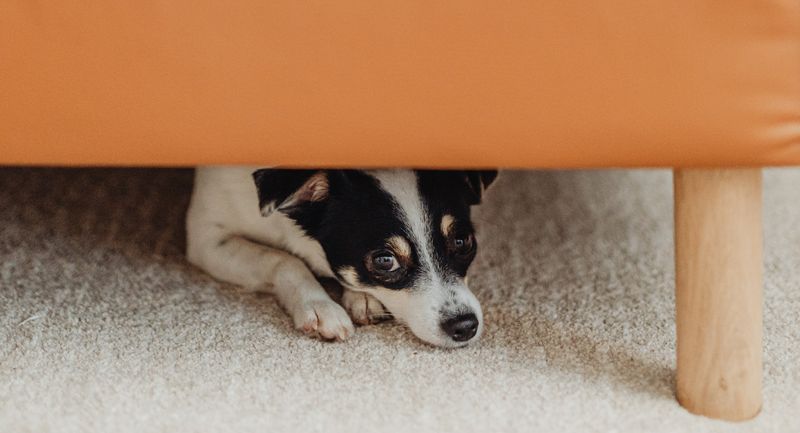
The whirring sound of a hairdryer may be a welcome tool for humans, but for dogs, it can be a perplexing and frightening experience. The combination of noise and the sensation of hot air blowing can be quite intimidating for them.
Dogs might perceive the hairdryer as a strange and unfamiliar object. It emits a continuous sound that they can’t easily ignore, often leading to stress or fear. The unpredictability of its movement and noise can make dogs wary of this common household appliance.
To help your dog become more comfortable, introduce the hairdryer gradually. Start with it turned off, letting your dog investigate it at their own pace.
Gradually increase exposure with low settings, rewarding calm behavior. Your patience and understanding can help turn a hair-raising experience into a more tolerable one for your pet.
9. Doorbells
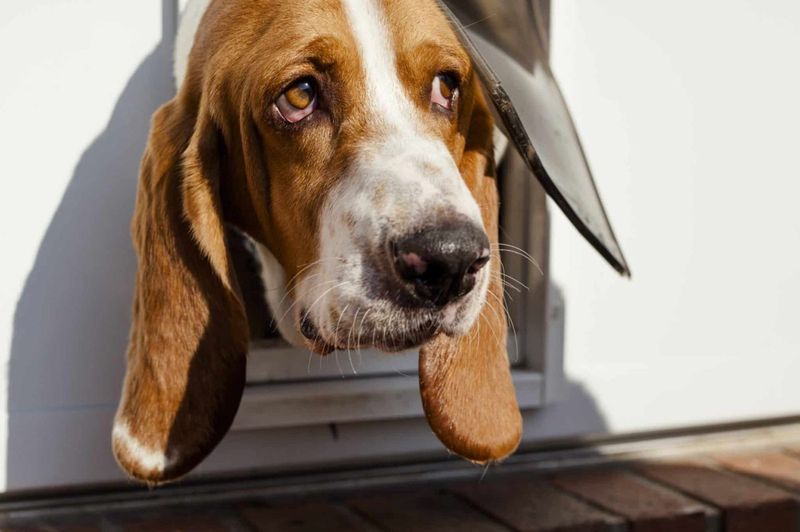
The sound of a doorbell can set off a flurry of excitement or anxiety in dogs. This seemingly simple chime often signals the arrival of someone at the door, prompting many dogs to bark or become agitated. For dogs, a doorbell is an unexpected interruption in the household’s tranquility.
It signifies activity and the potential presence of strangers, which can be both exciting and stressful. Some dogs might react by barking loudly, while others may become anxious or agitated. Managing a dog’s doorbell response involves consistent training and desensitization.
Teaching your dog to associate the doorbell with positive experiences can help reduce anxiety. Over time, with patience and practice, the doorbell can become a less stressful occurrence in your dog’s day.
10. Motorcycles
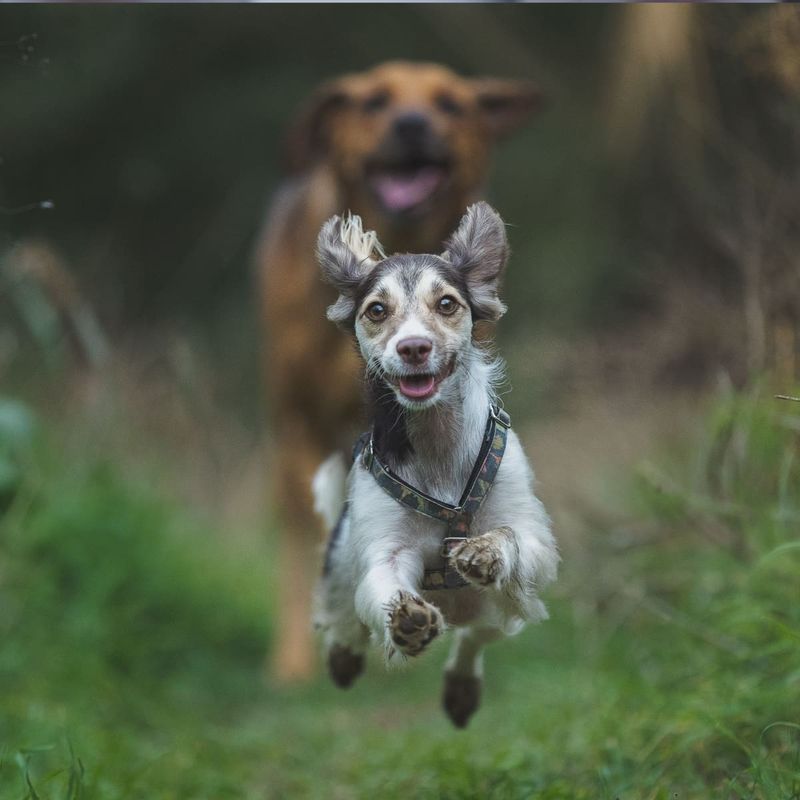
Motorcycles, with their roaring engines and sudden appearance, can be a significant source of anxiety for dogs. The loud, unpredictable sounds a motorcycle makes can startle dogs, especially when they pass by unexpectedly.
The revving of a motorcycle engine can be particularly distressing due to its intensity and the vibrations it creates. Dogs might react by pulling on their leash, barking, or trying to run away from the source of the noise.
To help your dog remain calm around motorcycles, practice desensitization techniques in a controlled environment. Gradual exposure and positive reinforcement can help your dog become more accustomed to the sound. Your goal is to make these encounters less intimidating and more manageable for your furry friend.
11. Lawnmowers
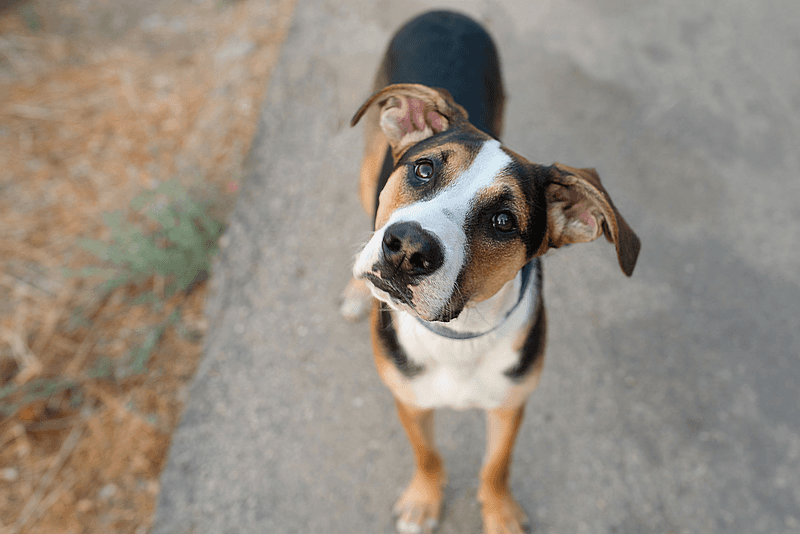
Lawnmowers are often seen as the arch-nemesis of dogs, with their loud motors and unpredictable movements across the lawn. The noise they produce can be quite unsettling, causing dogs to bark incessantly or retreat to a quieter place.
The combination of sound and motion can be confusing and frightening for dogs. To them, a lawnmower is a giant creature invading their territory, and their instinct might be to challenge it or run away. Introducing your dog to the lawnmower gradually can help reduce fear.
Start with the mower off, allowing your dog to investigate it at their own pace. Slowly increase exposure, using treats and praise to reinforce calm behavior. By understanding your dog’s perspective, you can help turn a dreaded noise into a mere background hum.
12. Mosquito Buzzing

While a mosquito’s buzz might be a minor annoyance for humans, for dogs, it can be a source of irritation and distraction. The high-pitched buzzing noise can be particularly aggravating, causing dogs to shake their heads or snap at the air.
Dogs have a heightened sense of hearing, making the mosquito’s persistent buzz more pronounced. This sound can trigger a dog’s instinct to hunt or protect themselves from the tiny invader. Their reactions can range from mild annoyance to full-blown agitation.
To help your dog cope, consider using pet-safe insect repellents or keeping them indoors during peak mosquito activity. Ensuring your dog’s environment is as mosquito-free as possible can help eliminate this pesky problem, allowing your dog to relax in peace.
13. High-Pitched Whistles
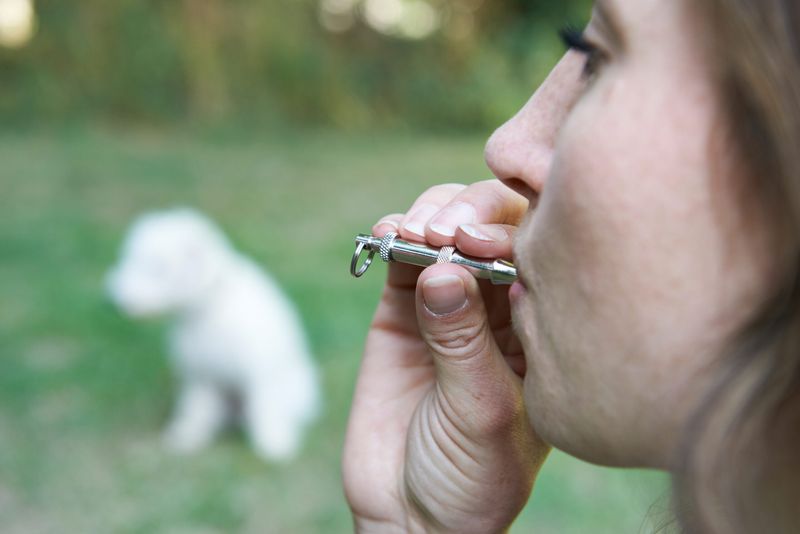
High-pitched whistles might be a useful tool for training, but they can also be quite unsettling for dogs. The sharp, piercing sound can be uncomfortable for their sensitive ears, often leading to confusion or distress.
Dogs have a broader range of hearing than humans, making them more susceptible to high-frequency sounds. While some dogs might respond to a whistle with curiosity, others may find it distressing and react with anxiety or avoidance.
To use whistles effectively, ensure that the sound is not too harsh or loud for your dog. Start with gentle tones and observe your dog’s reaction. Positive reinforcement and patience are key to making this sound a useful and non-threatening part of your dog’s training routine.






